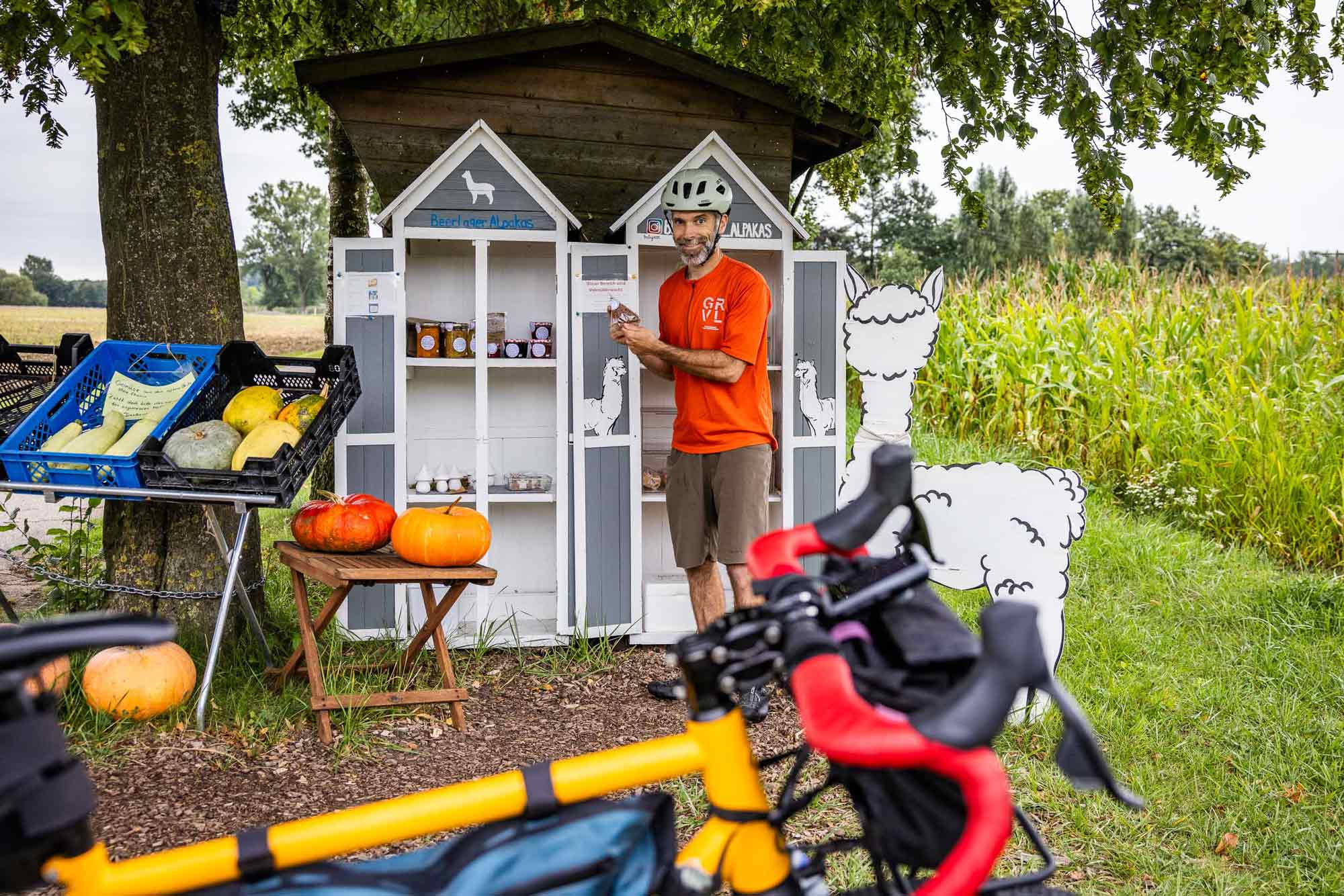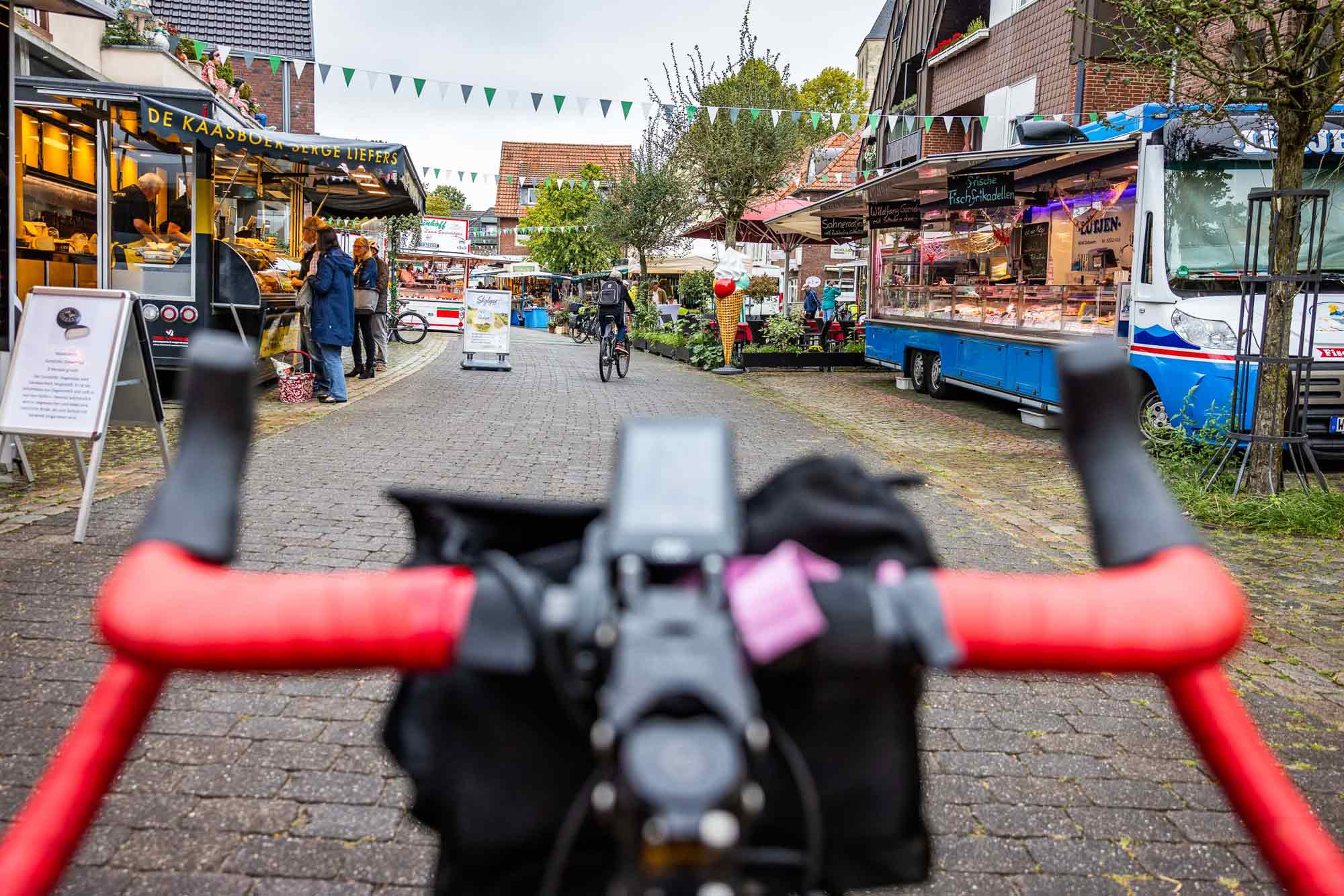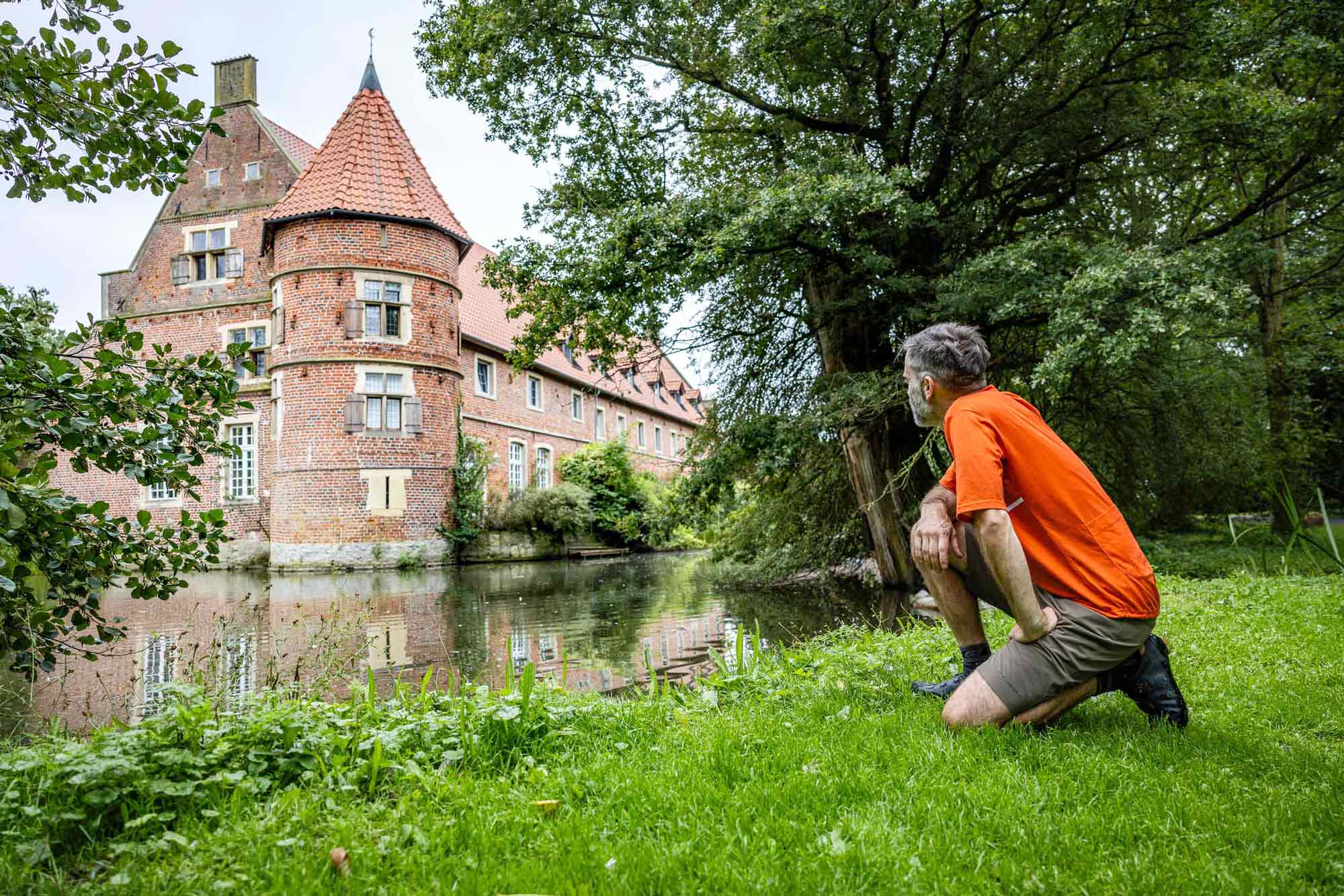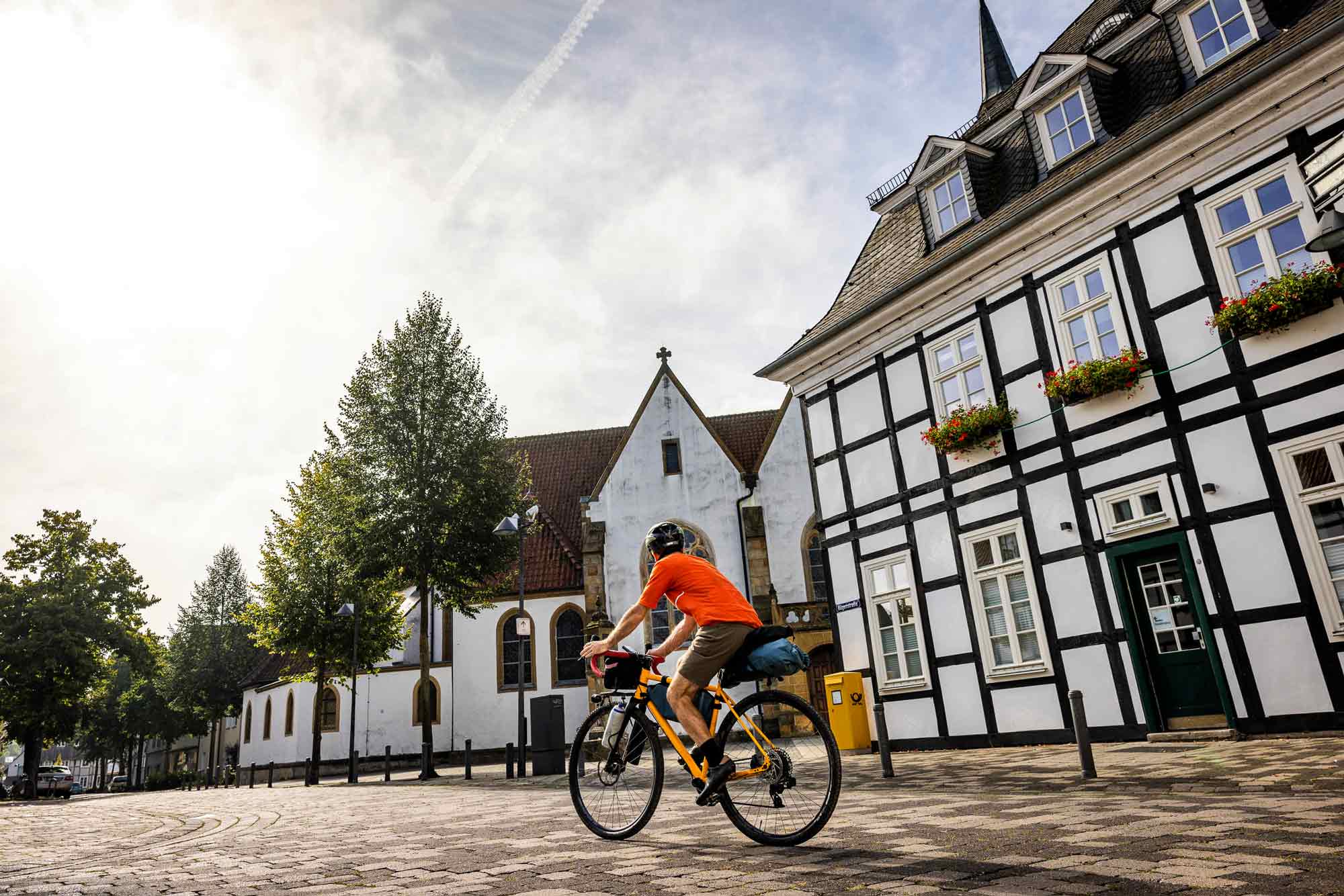What exactly did we experience? You can read about this in detail in our issue #22. There you will find the Adventure Report for our Europaradweg R1 Münsterland tour. In this blog post, we have put together all the information you need to help you plan a similar adventure yourself. From the route travelled, to travel recommendations, accommodation and highlights along the way, you’ll find all kinds of inspiration here. All you have to do is pick your personal favourites and put together your own journey on the R1! And now it’s time to get on your bike and have fun on the R1 European cycle route.
What exactly did we experience? You can read about this in detail in our issue #22. There you will find the Adventure Report for our Europaradweg R1 Münsterland tour.

European cycle route R1: Bikepacking in Münsterland – Overview
European cycle route R1: The journey
As you know, we don’t use cars for our stories. This is important to us because when we travel, we want to do so as sustainably as possible. The R1 European cycle route is predestined for a car-free journey. It runs through towns that are well connected with a railway station and are well worth seeing. The best thing to do is to take a look at the overall route of the cycle path, decide which section you would like to cycle and then see which towns have suitable stops. That’s exactly how we did it and came up with Coesfeld for the start and Paderborn for the finish.
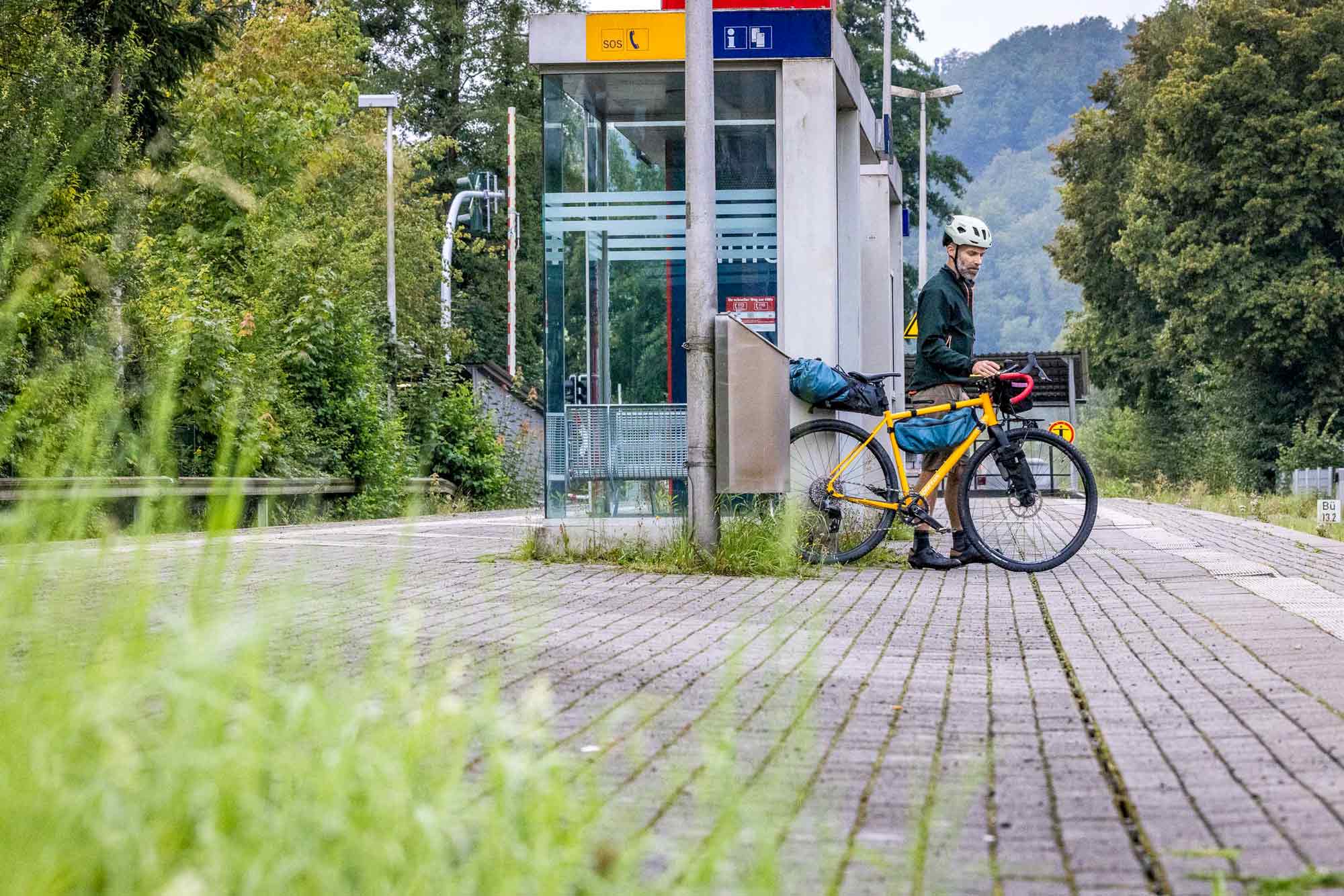
Actually, both towns are not directly on the R1 European cycle route. Nevertheless, we decided in favour of these cities because the rail connections were simply ideal. The approach to and departure from the actual route was also very attractive and had two cool highlights up its sleeve: the Münsterland cycle track and the Senne military training area near Paderborn. A look at the komoot map will help you plan your own route so that it suits you perfectly!
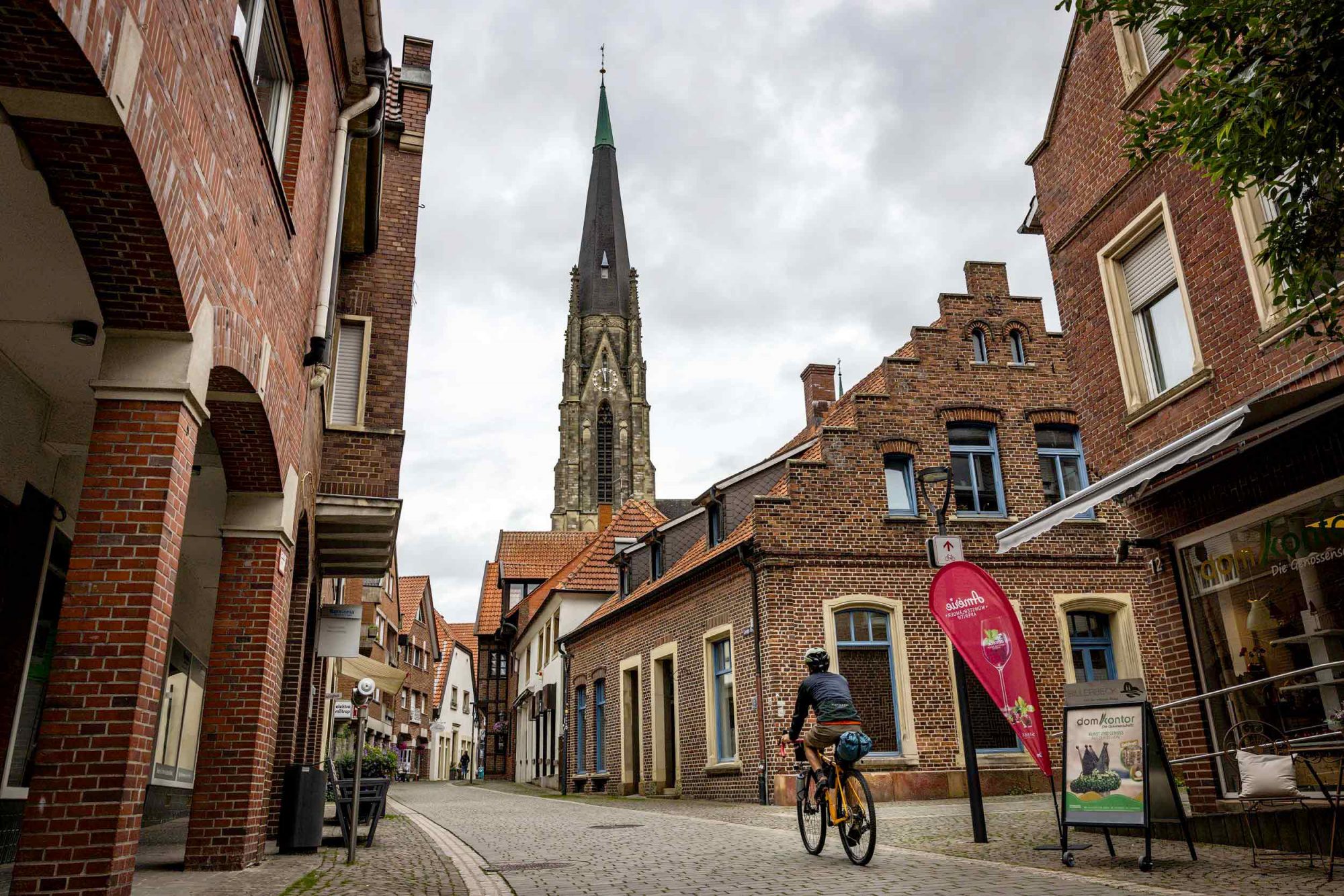




The right bike & luggage for bikepacking in Münsterland
What do I need to take with me? That’s the big question before every cycle tour. In this case it is relatively simple. This time we wanted to add a little “enjoyment factor” and sleep with a roof over our heads rather than in a tent. This of course saves a lot of luggage. As the route repeatedly passes through towns worth seeing, there was no need to plan any special food supplies. In other words: We are travelling with light bikepacking luggage. What we absolutely had to take with us, however, was rain gear – because the weather forecast sounded “refreshing”.
As far as the bike is concerned, the requirements are also rather low. We rode a normal gravel bike with normal gravel tyres and a 1×12 gear ratio (42 teeth at the front, 10-42 at the rear). As the route is almost flat and only makes occasional detours onto unpaved paths, you can ride it on almost any type of bike. The gravel bike is ideal in that you can travel quickly but are always flexible enough to spontaneously discover exciting highlights off the route.
Accommodation for cycle travellers in Münsterland
The Münsterland region is known for its excellent cycle tourism infrastructure. This also includes all kinds of places to stop for refreshments and accommodation that specialise in cyclists. Further down in this blog post, we have put together our accommodation and other recommendations for the individual stages. We generally recommend you take a look at the Bett & Bike website of the ADFC. There you will find many hosts from all price categories who have a particularly good offer for cyclists. We have had consistently positive experiences with this portal so far and can highly recommend that you give it a try.
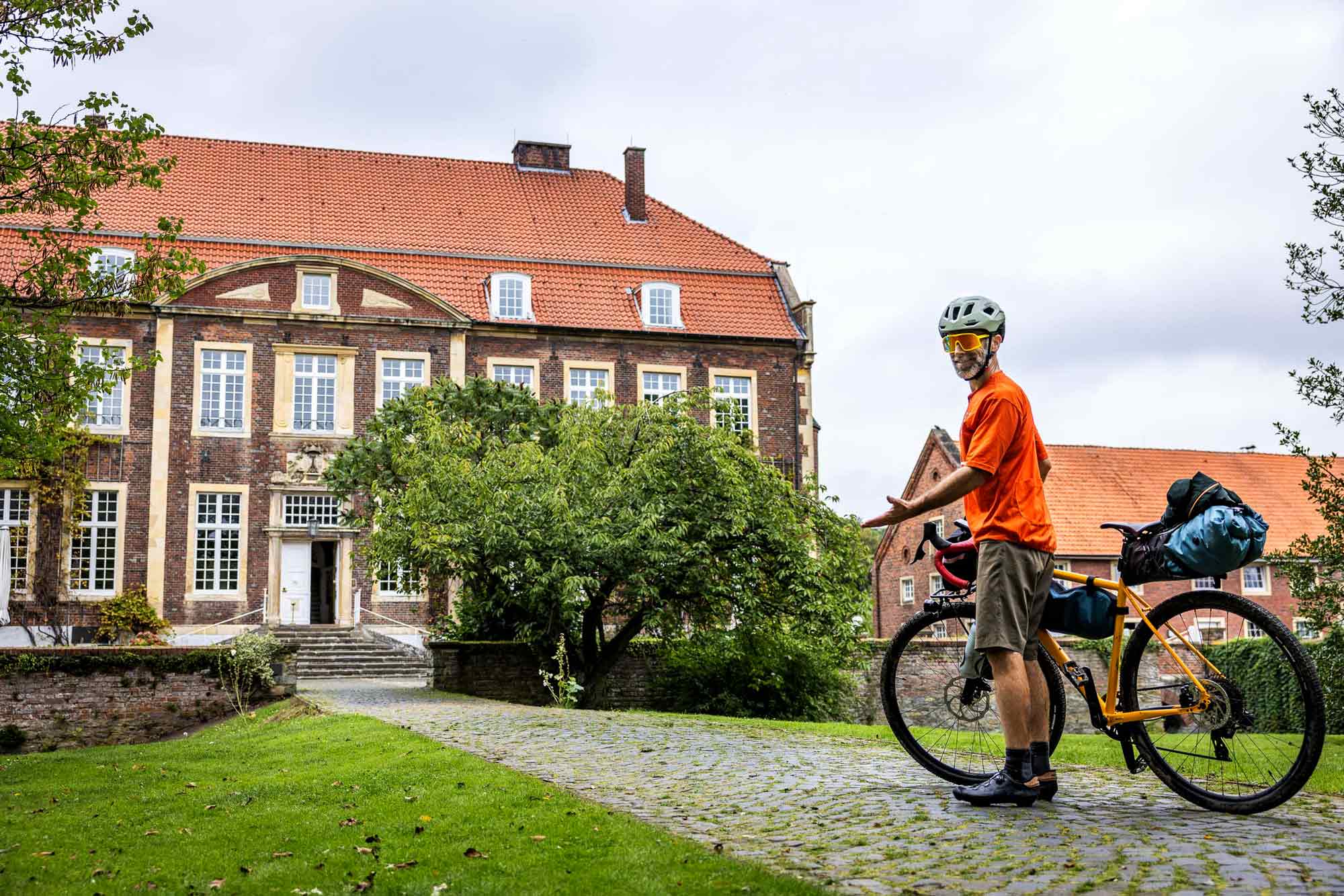
Catering on the R1 European cycle route
As already mentioned, you don’t need to prepare separately for the R1 Münsterland section of the European cycle route, as there are numerous options along the way. To be honest, it would almost be a shame if you limited yourself to the sandwich you brought with you and didn’t try out the numerous culinary options that await you. Our highlights were undoubtedly the numerous purely random ” food stops” that we passed. These included weekly markets, but also small self-service shops, which are always set up directly on the cycle path. If you fancy something hearty, you can also stop for a bite to eat in the towns on the route – or buy something from the supermarket. In other words, apart from a few emergency bars and water, you don’t really need to take anything with you.
More information about the Münsterland region
Before you plan your journey along the R1 European Cycle Route, we recommend that you take a look at the official website of the cycle route. The elaborate cultural stories are particularly worth a look. They describe the special features of various sections of the D-Route 3 and provide many suggestions for (cultural) breaks on the route or in the surrounding area.
We were travelling in the Münsterland region and experienced two of these cultural stories. Firstly, we discovered the “castles, fortresses and idyllic countryside” in the picturesque, picturesque Münsterland region. From the imposing Hülshof Castle to the beautiful Münsterland parkland, there’s plenty to see, learn and discover.
On our way from Münsterland to East Westphalia-Lippe, the numerous small, historic towns were the main theme of the cultural stories “Experience historic towns”. From a cosy break on a historic market square to an overnight stay in a perfectly restored half-timbered hotel, you can take this motto quite literally. Our recommendation: An overnight stay in Rheda-Wiedenbdrück is a highlight in every respect.
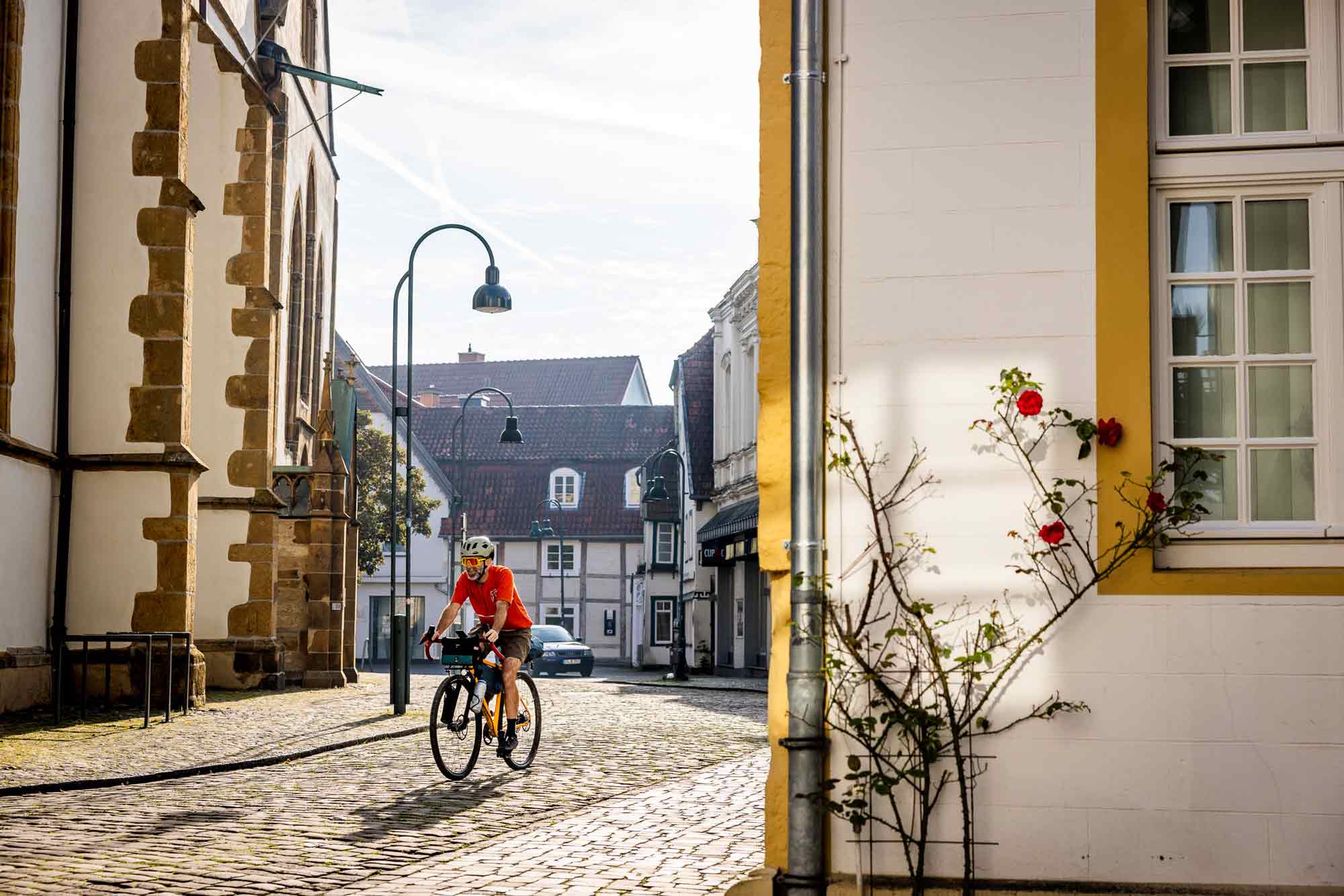
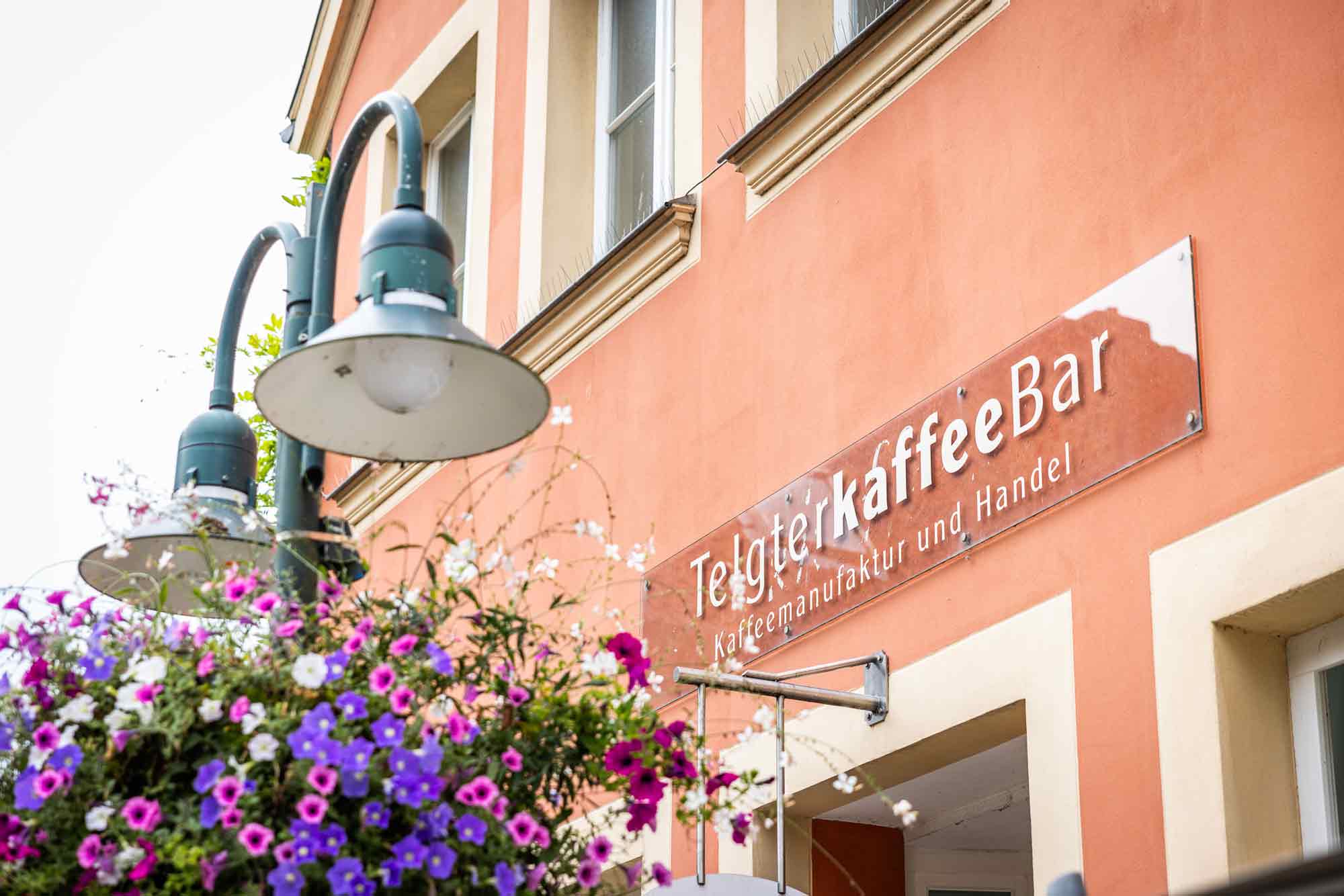

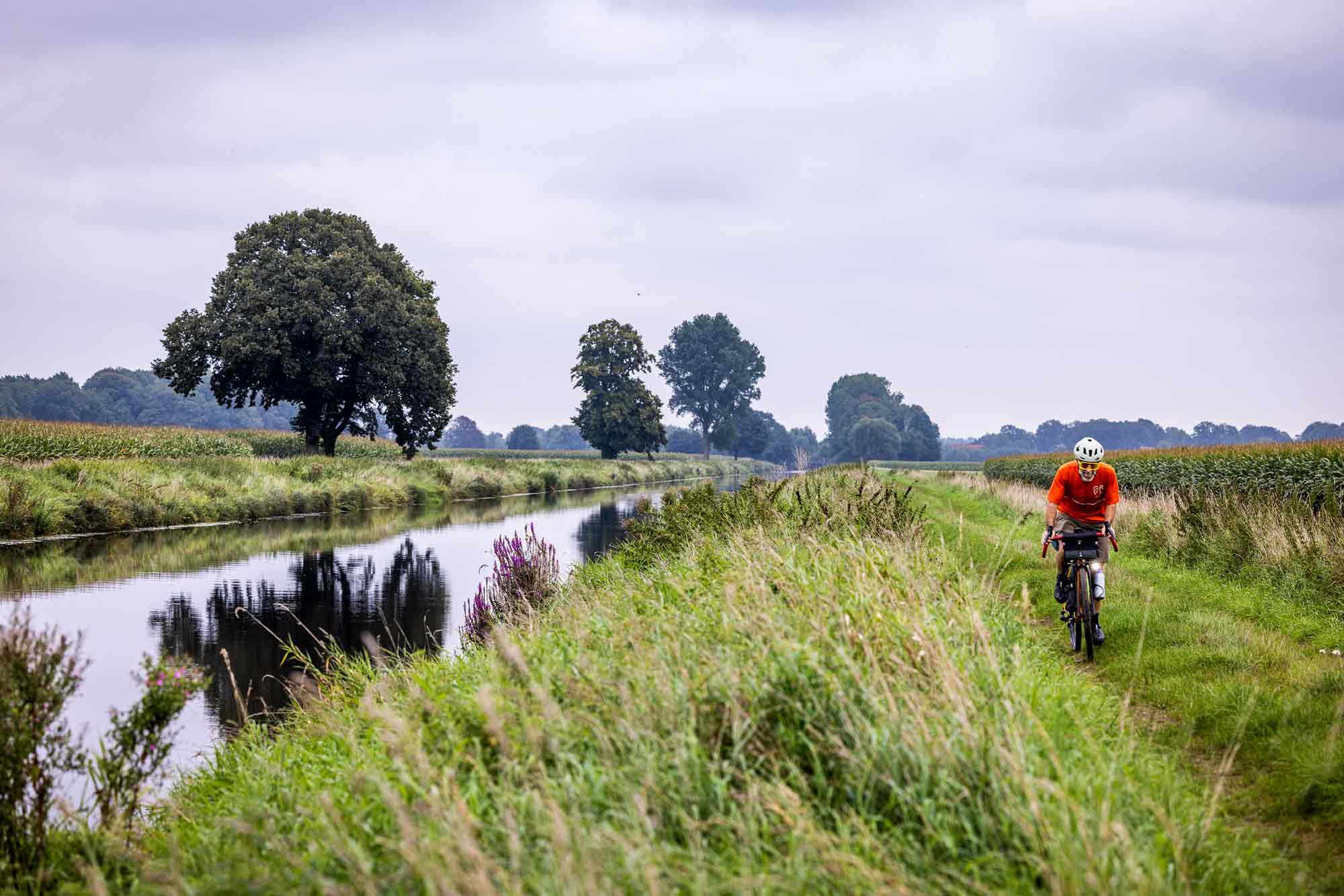
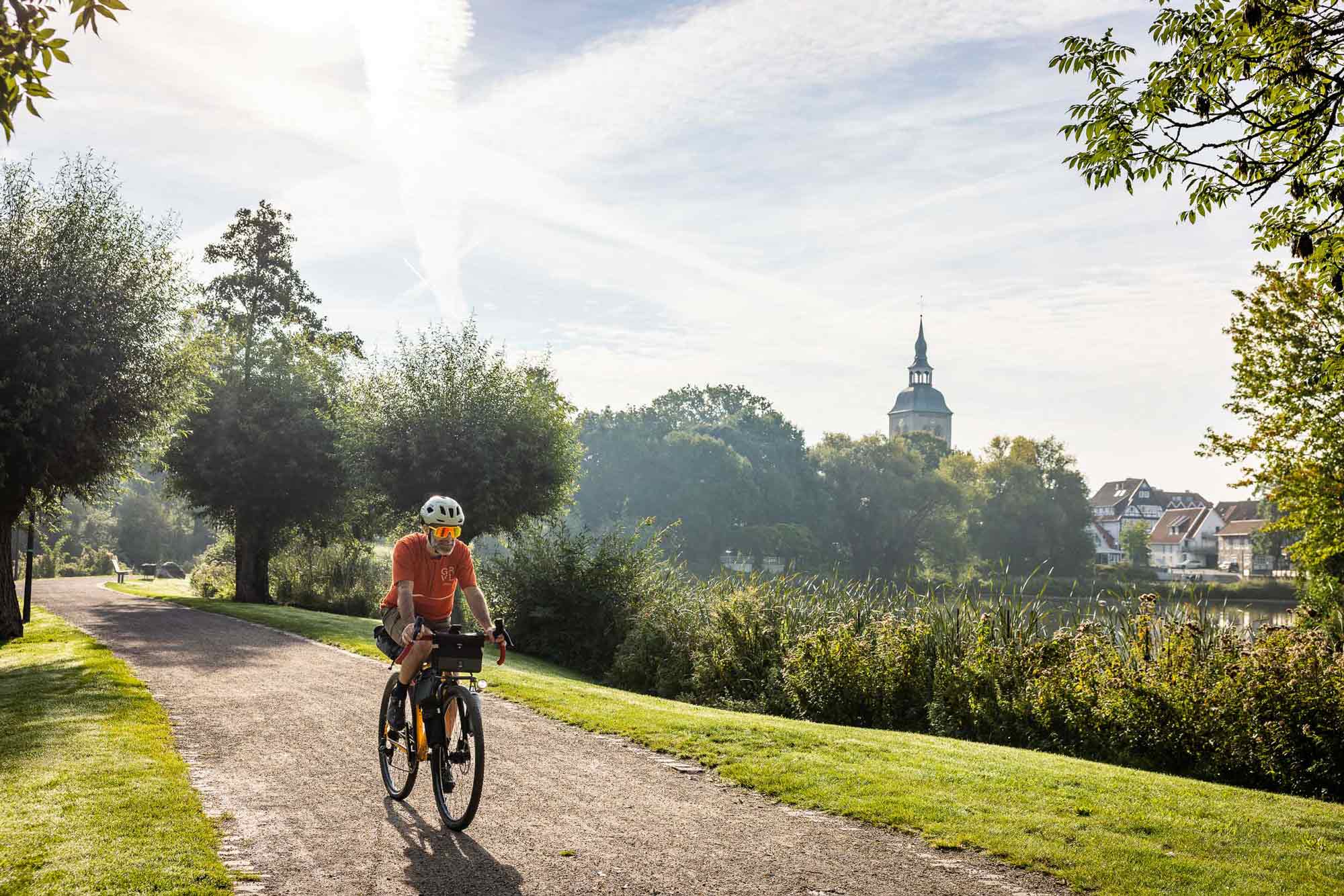
The route in detail: The R1 European cycle route in Münsterland from Coesfeld to Paderborn
Stage 1: European cycle route R1 from Coesfeld to Münster

As the tour starts on the edge of the Baumberge mountains, a few small climbs ensure that you warm up quickly. Otherwise, you can look forward to great cycle paths – you are in Münsterland after all!
The destination of the first stage is Münster and there is a lot to see on the way there. Beautiful old towns, impressive manor houses and moated castles and, of course, the major cultural highlight: Hülshoff Castle with its Rüschhaus and poetry trail. In short: it never gets boring and you can still find peace and quiet.
Highlights along the route:
- Billerbeck Cathedral
- House Beckebans (Kunsthaus Ruchniewitz)
- House Stapel
- The “sandstone town” of Havixbeck
- Hülshof Castle with poetry path
- Rüschhaus House
Accommodation
Dinner
Breakfast
Stage 2: European cycle route R1 from Münster to Rheda-Wiedenbrück
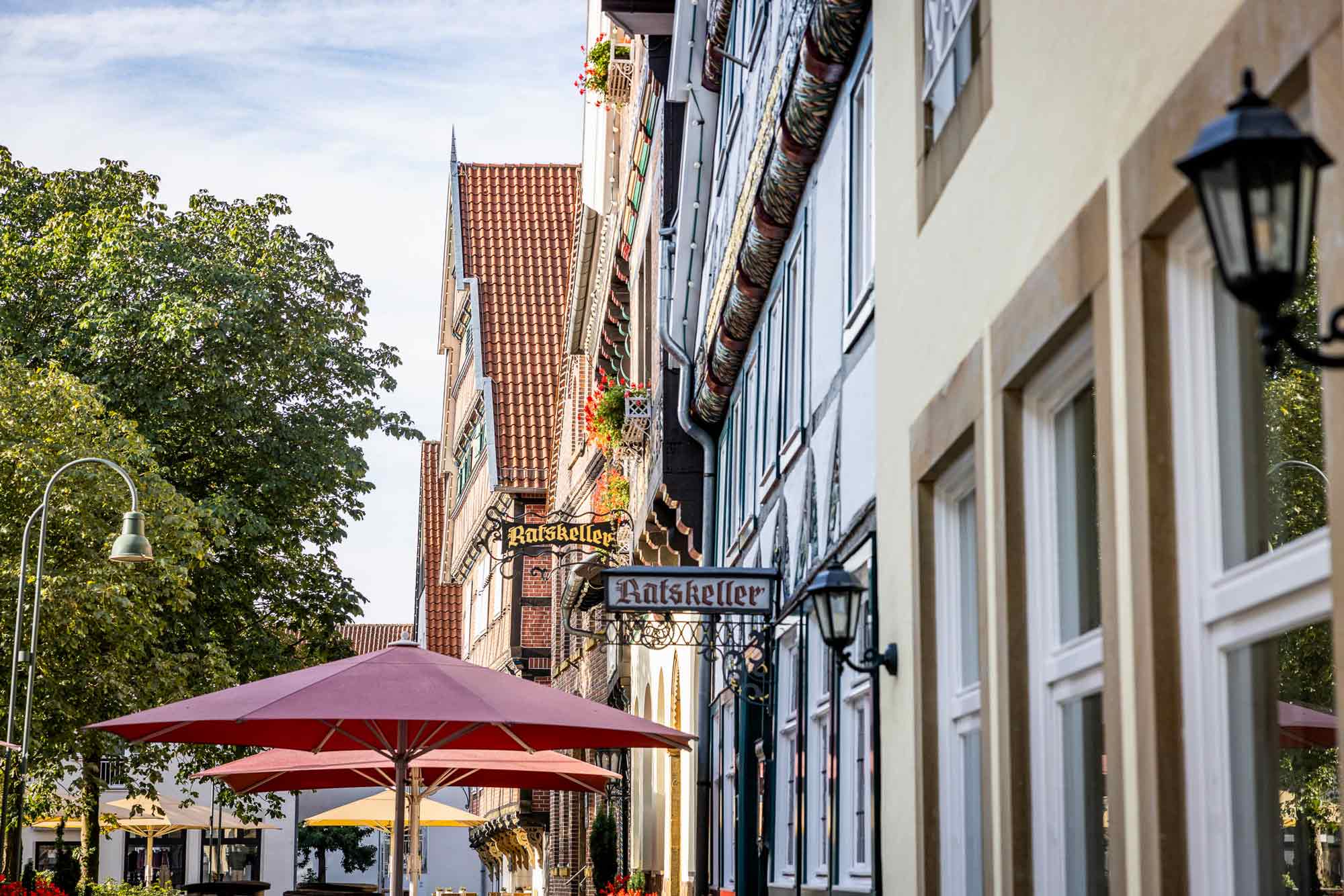
After an enjoyable breakfast, you can treat yourself to a sightseeing tour of Münster. If you follow the “Promenade”, the cycle highway around the city centre, you will see all sorts of things. This is topped off with a Doppio in the Roestbar, where you can enjoy excellent coffee.
But now it’s finally time to cycle! Head out of Münster, along the Dortmund-Ems Canal for a while and you’re already far out again. The vast parkland of yesterday is now being replaced by a landscape characterised by agriculture. You pass many farms and fields – pure rural idyll. The old market square in Telgte is simply too beautiful to roll through carelessly: Time for a coffee break!
You arrive in Rheda-Wiedenbrück in the evening. This place is perfect as a stopover. For dinner, we recommend a visit to the Wiedenbrück market square – you’re guaranteed to find a suitable restaurant there!
Highlights along the route:
- Black & Yum coffee roastery in Telgte
- Austermann farm shop
- Marketplace Warendorf
- Kleine Straße in Rheda
- Flora Westfalica
- Historic old town of Wiedenbrück
Accommodation
Dinner
- Fuchshöhle
- Numerous restaurants on Wiedenbrück’s historic market square
Stage 3: European cycle route R1 from Rheda Wiedenbrück to Paderborn
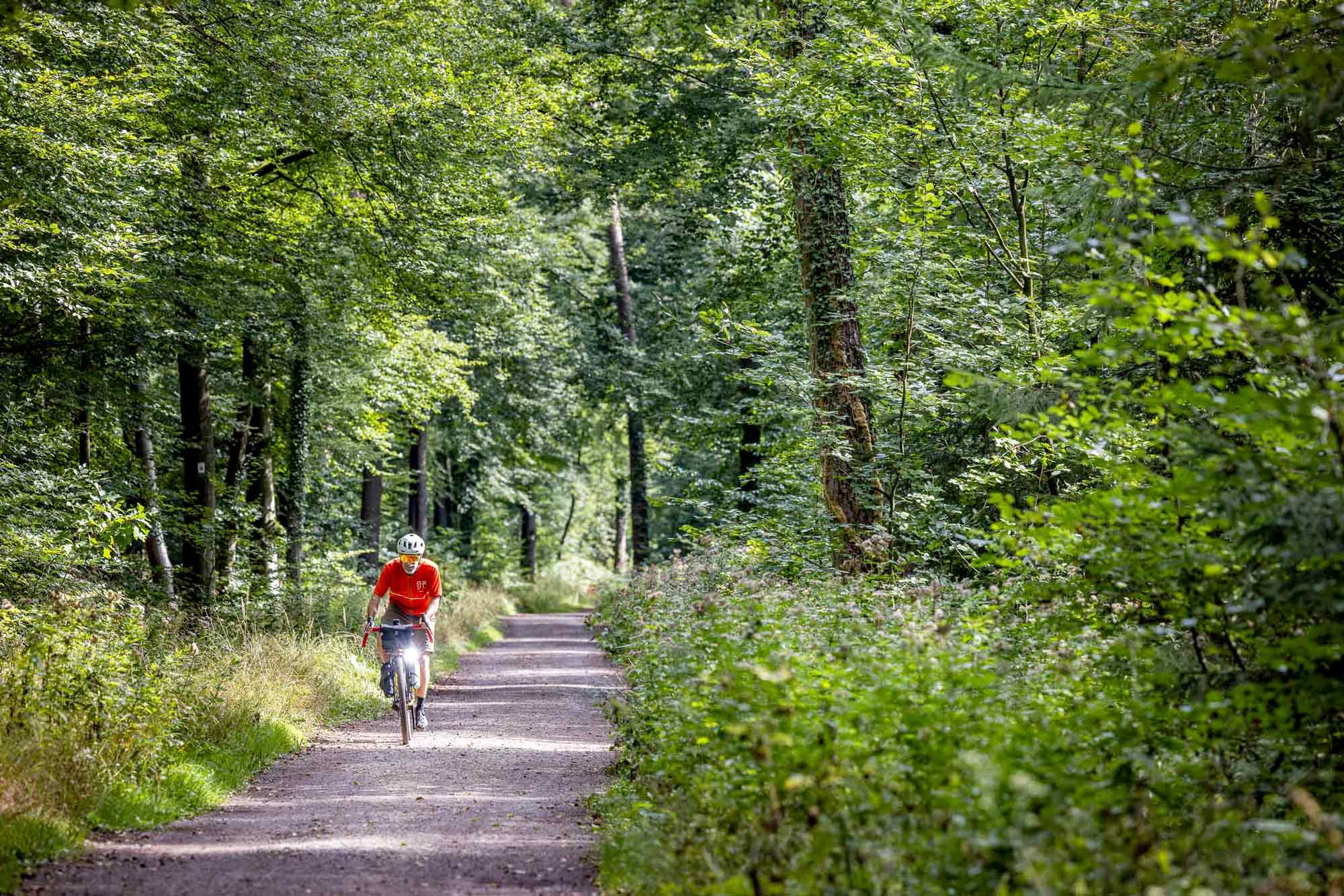
This stage is very diverse. At Schloss Holte, you cycle through a dense deciduous forest with huge trees. Then again open passages with wide meadows and fields. And finally, the open heathland on the Senne military training area – there’s a lot on offer for the eye today.
Speaking of the Senne: Like the first tour, this one does not follow the entire European cycle route. This is due to the fact that we wanted to take the train home again in the evening. This is why the route bends southwards at the end, just over the training ground. So the last 25 kilometres or so are not on the R1 – but still very beautiful! The train was a great way to get home from Paderborn. You can also follow the R1 to Detmold. There is also a railway station with good connections
Tip:
If you would like to join the tour to Paderborn, find out in advance whether the practice area is open. This is not always the case. You can find the relevant access times here.
Highlights along the route:
- Rietberg, regional shopping opportunities can be found here
- Jagdschloss Holte
- Senne
Transparency notice:
We would like to thank Münsterland e. V., the World Heritage Region Anhalt-Dessau-Wittenberg e. V. and the Local Action Group (LAG) Fläming-Havel e. V. for inviting us to Münsterland. They made the cycle tour possible as part of the D3-R1-Attractive project funded by the Federal Ministry for Digital and Transport and covered the costs of organisation, accommodation and travel. However, that doesn’t change the fact that we did this trip the “lifeCYCLE way” and are reporting on it subjectively.
